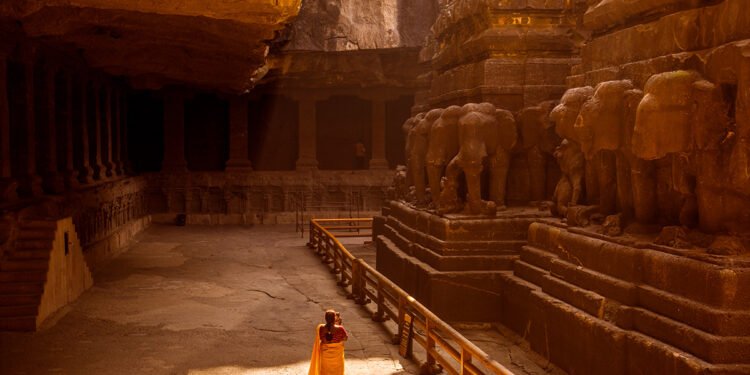Ancient Indian civilization stands as a remarkable testament to human achievement, with advancements that span science, mathematics, medicine, architecture, and philosophy. From the groundbreaking concept of zero to holistic healing practices like Ayurveda, ancient India’s contributions continue to shape our modern world. Yet, its journey has not been easy. Over centuries, waves of invaders looted wealth, desecrated sacred spaces, and attempted to erase its heritage. Despite this, India’s cultural roots have endured, surviving attempts to overshadow its achievements. Today, ancient India’s legacy shines brighter than ever, reminding us that true knowledge and culture cannot be destroyed but only rediscovered.
Table of Contents
Ancient Indian civilization stands as one of the most enigmatic and influential civilizations in human history. Known for its impressive contributions across fields such as science, mathematics, architecture, medicine, spirituality, and philosophy, this civilization was a beacon of advancement that thrived for thousands of years. Dating back to the Indus Valley Civilization (circa 3300 BCE), it showcased an understanding of the world far ahead of its time, with developments that have influenced societies worldwide.
However, India’s ancient achievements did not go unnoticed by the outside world. Through the centuries, waves of foreign invaders plundered, repurposed, and even claimed ownership of India’s rich legacy. From ancient universities burned down to temples raided for their wealth, the history of ancient Indian civilization also tells a story of survival, despite these systematic attempts to strip away its heritage, Indian civilization’s deep-rooted culture has endured, standing resilient against the trials of time.
This article explores the brilliance of ancient India in various domains, highlighting both the advancements and the resilience of this remarkable civilization.
Urban Planning and Architecture: Cities Ahead of Their Time
The Indus Valley Civilization, known for its thriving cities like Mohenjo-Daro and Harappa, displayed an architectural prowess that feels astonishingly modern, with meticulously planned grid layouts, public baths, water management systems, and uniform building materials.
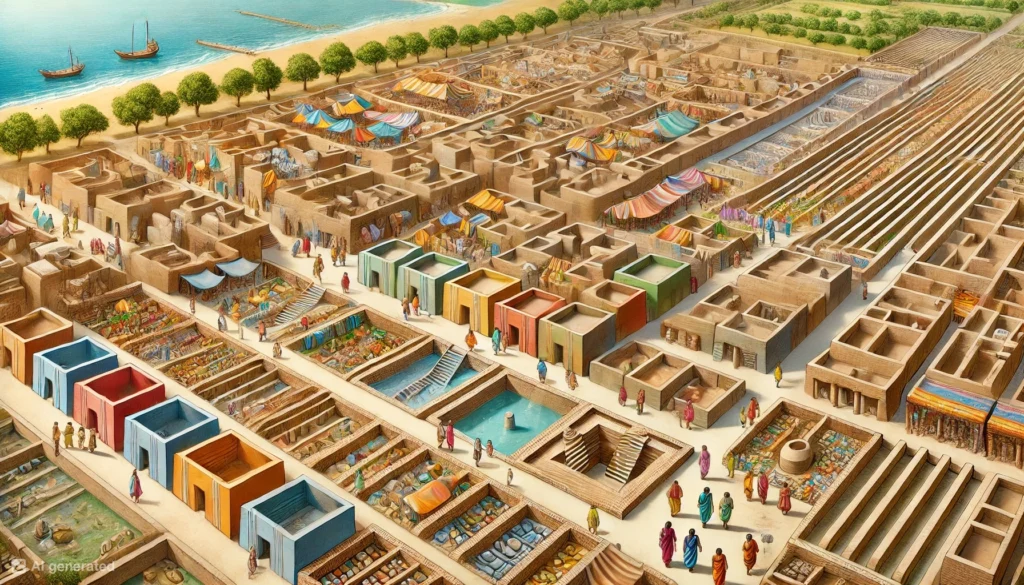
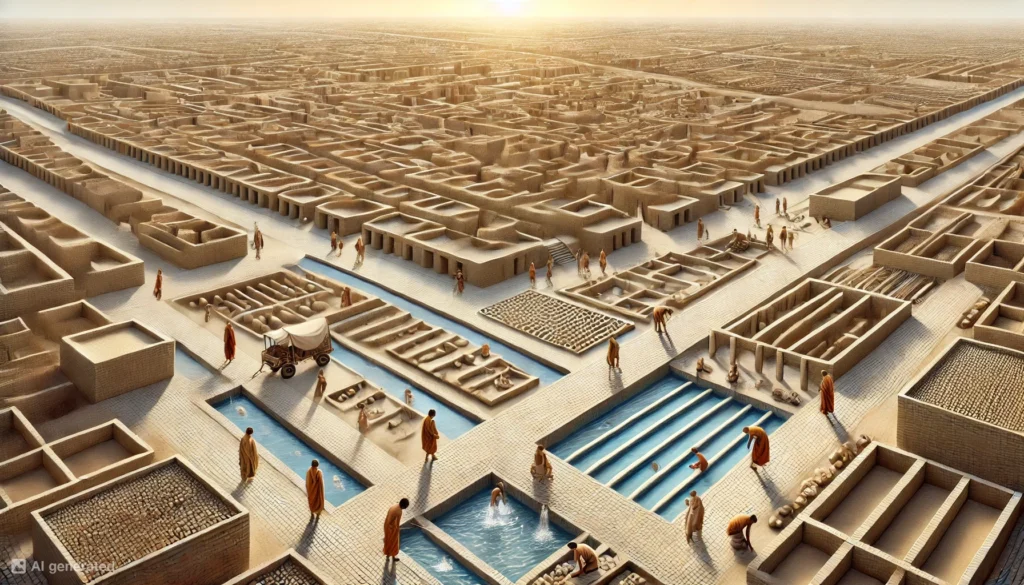
- Grid Layouts: Cities in the Indus Valley were planned with streets set in grid patterns, with right-angled intersections—a hallmark of modern urban planning. Such a layout suggests the presence of sophisticated administrative systems and organized governance.
- Drainage and Water Management: The civilization developed an advanced drainage system and was known for its public baths and private wells. The Great Bath at Mohenjo-Daro, for instance, is one of the oldest known public water tanks, symbolizing the importance placed on hygiene and ritual cleanliness.
- Standardized Construction: Buildings in the Indus Valley were constructed using uniformly baked bricks, suggesting not only expertise in material science but also a form of mass production, indicating centralized administrative oversight.
India’s early cities attracted invaders who saw the temples and public infrastructure as potential sources of wealth rather than cultural heritage. While these invasions resulted in the destruction of many architectural marvels, the underlying principles of urban planning persisted. Fast forward, and you see the West extolling the virtues of grid layouts and organized sewage systems—a lesson ancient India taught, albeit without credit.
Mathematical Innovations and Astronomy: Pioneers of a New World Order
India’s contributions to mathematics and astronomy were revolutionary. Ancient Indian scholars demonstrated remarkable precision and insight in mathematical and astronomical studies, advances that would only be appreciated by the West centuries later.
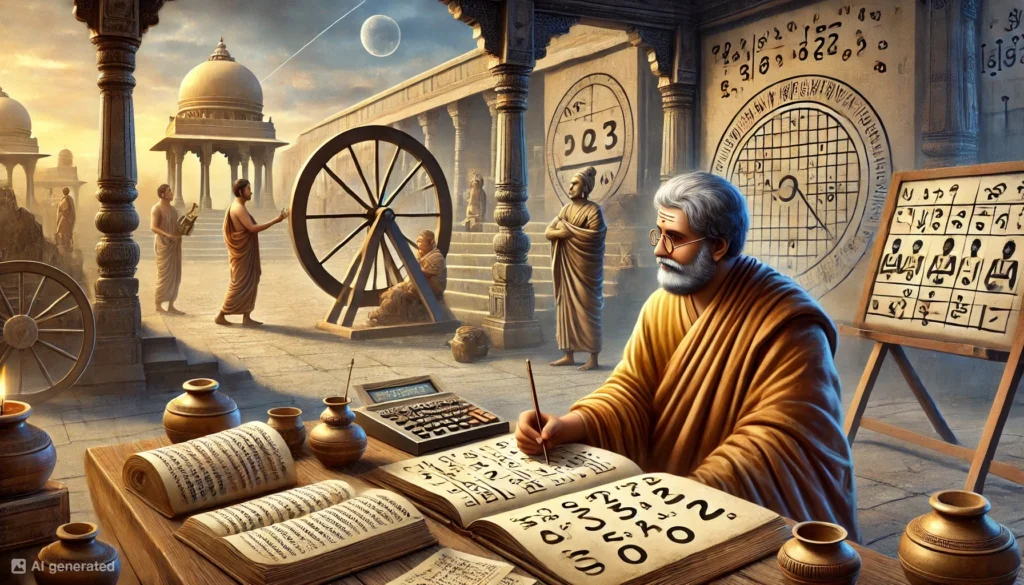
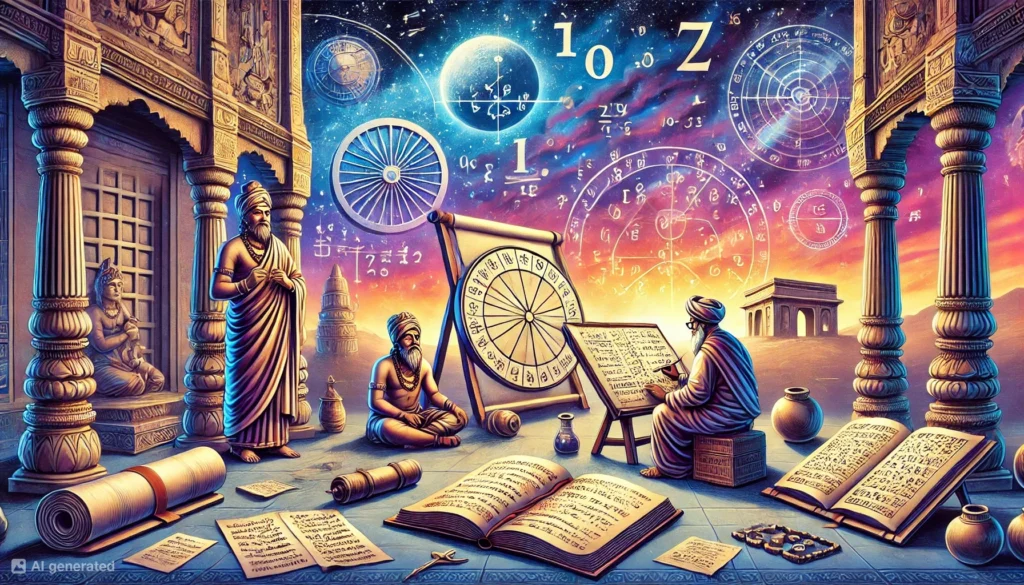
- Concept of Zero and Decimal System: The concept of zero, introduced by Indian mathematicians, was transformative for mathematics. Aryabhata, an Indian mathematician from the 5th century, formalized the decimal system, making calculations more efficient and laying the foundation for algebra and calculus. In fact, without zero, much of modern mathematics, physics, and even computer science would simply not be possible.
- Astronomical Insights: Ancient Indian astronomers like Aryabhata and Bhaskara made strides in understanding planetary movements and eclipses. Aryabhata, in fact, calculated the Earth’s rotation with impressive accuracy and conceptualized Earth’s heliocentric orbit—while other civilizations were still debating whether Earth was flat.
- Trigonometry and Algebra: Ancient Indians were among the first to work with trigonometric functions, such as sine and cosine, which became foundational in trigonometry and calculus. Concepts in trigonometry developed by mathematicians like Bhaskara II influenced mathematics globally.
Many of these texts and discoveries made their way to the West over time, sometimes “borrowed” without attribution, and reappeared under other names. Sadly, much of this ancient knowledge suffered when invaders, such as Bakhtiyar Khilji, destroyed the renowned Nalanda University in the 12th century, burning invaluable manuscripts on mathematics and astronomy. Despite these losses, ancient Indian mathematics continues to serve as the backbone of much of modern science—a fact often glossed over in history books.
Medicine and Ayurveda: The Roots of Holistic Health
Ancient Indian civilization’s knowledge of medicine, most notably Ayurveda, is a prime example of its advancements. Ayurveda, a holistic system of natural healing, has been practiced for over 3,000 years and is still widely respected for its holistic approach to health.
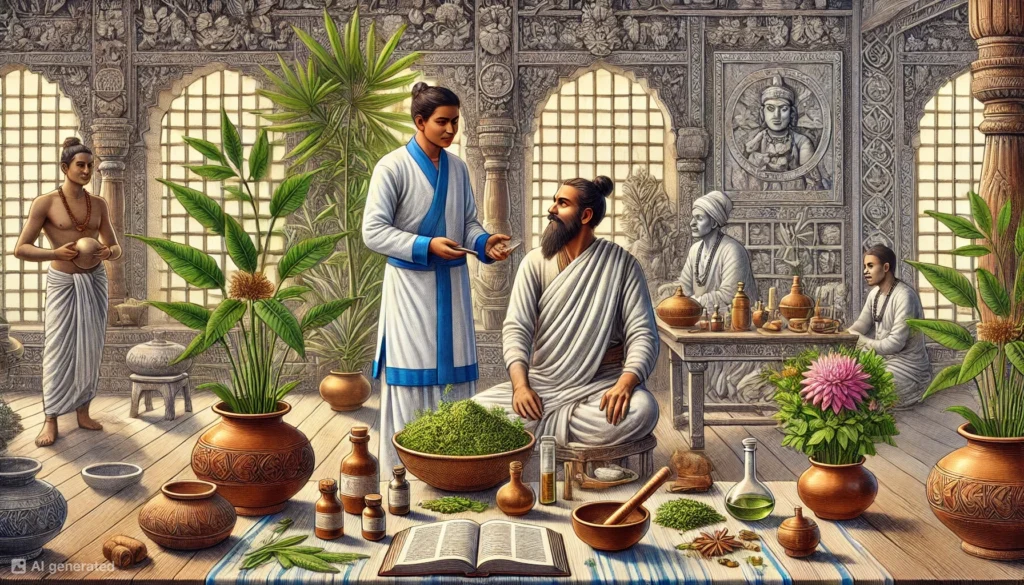
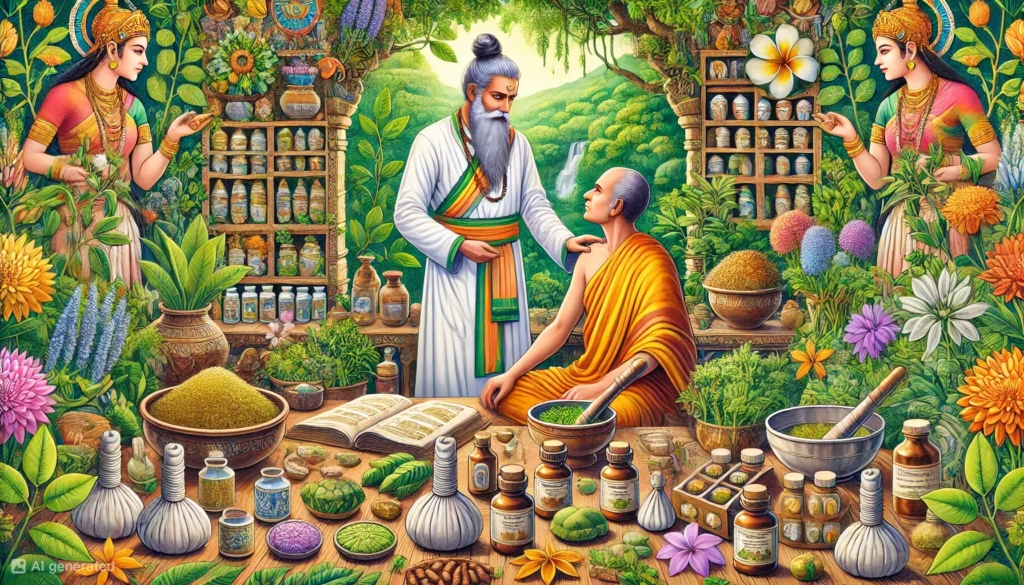
- Surgical Techniques: Sushruta, known as the “father of surgery,” compiled the Sushruta Samhita, which describes various surgical procedures, including cataract surgery, skin grafting, and even rhinoplasty. Such advancements reveal a deep understanding of human anatomy and surgery.
- Ayurvedic Medicine: Ayurveda emphasized preventative care and sought to maintain balance within the body through herbs, dietary practices, and yoga. Its approach to health and wellness aligns remarkably well with modern holistic practices, underscoring its advanced understanding of disease prevention and health maintenance.
- Knowledge of Medicinal Plants: Ayurveda documented extensive knowledge about medicinal plants, as found in the Charaka Samhita. These ancient Indian texts on herbal medicine and natural remedies reveal an advanced understanding of botany, mineralogy, and the environment’s role in health.
Unfortunately, during the invasions, much of this medical knowledge was lost or dismissed. Colonial powers later dismissed Ayurveda as “folk medicine,” only to rebrand and reintroduce the principles of herbal and holistic medicine in the West. Today, we witness wellness industries profiting from “holistic health” techniques rooted in Ayurveda, a testament to the timelessness of India’s medical wisdom that was forcibly ignored but could never be erased.
Philosophy, Spirituality, and Ethics: Enduring Wisdom Through the Ages
Ancient Indian civilization has long been celebrated for its spiritual and philosophical insights. Texts such as the Vedas, Upanishads, and later the Bhagavad Gita explore the depths of reality, consciousness, and the nature of existence.
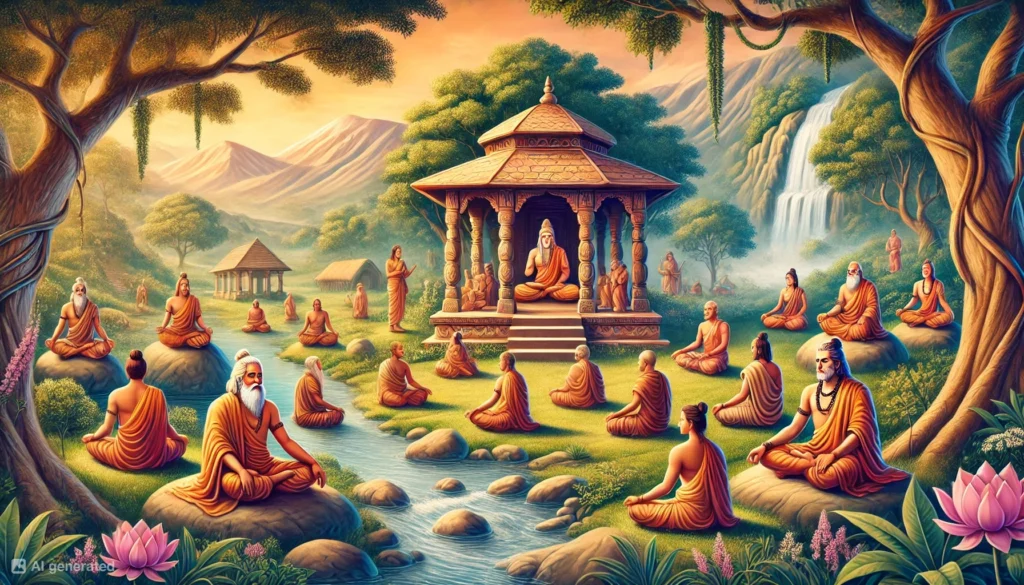
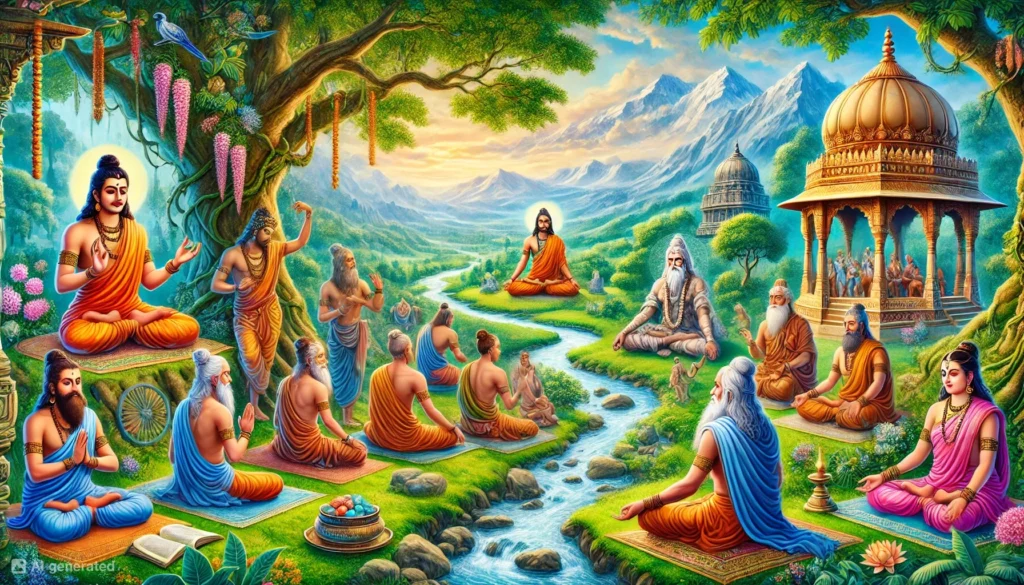
- Vedic Philosophy and Upanishadic Wisdom: Ancient Indian texts such as the Vedas and Upanishads discuss profound questions of existence, emphasizing the interconnectedness of all beings. The Upanishads delve into concepts like Brahman (universal consciousness) and Atman (the individual soul), providing a philosophical framework that still resonates globally.
- Yoga and Meditation: The practices of yoga and meditation originated in ancient India as methods for spiritual development. Patanjali’s Yoga Sutras outlined eight limbs of yoga, guiding individuals on the path to enlightenment and self-realization. It’s intriguing that modern wellness trends are rediscovering these practices under the guise of “new-age” teachings.
- Ethics and Morality in Dharma: Indian philosophy centers around the concept of “Dharma,” or righteous duty. Texts like the Mahabharata and Ramayana explore the nuances of ethical decision-making and moral dilemmas in complex narratives, often referred to today in ethical philosophy.
Ironically, despite centuries of invasions and attempts to diminish its value, Indian spirituality and philosophy endured, rediscovered, and adopted by the world over. From mindfulness and meditation to yoga studios in every corner of the globe, ancient India’s spirituality has made a full circle back to global prominence, a feat Western society is eager to adopt—if a bit belatedly.
Literature and Linguistics: The Legacy of Language
Ancient Indian civilization contributed some of the world’s most revered literary works and was home to one of the oldest, most refined languages, Sanskrit. The Mahabharata, the Ramayana, and other texts are literary treasures, revered not just for their storytelling but for their exploration of love, duty, and cosmic order.

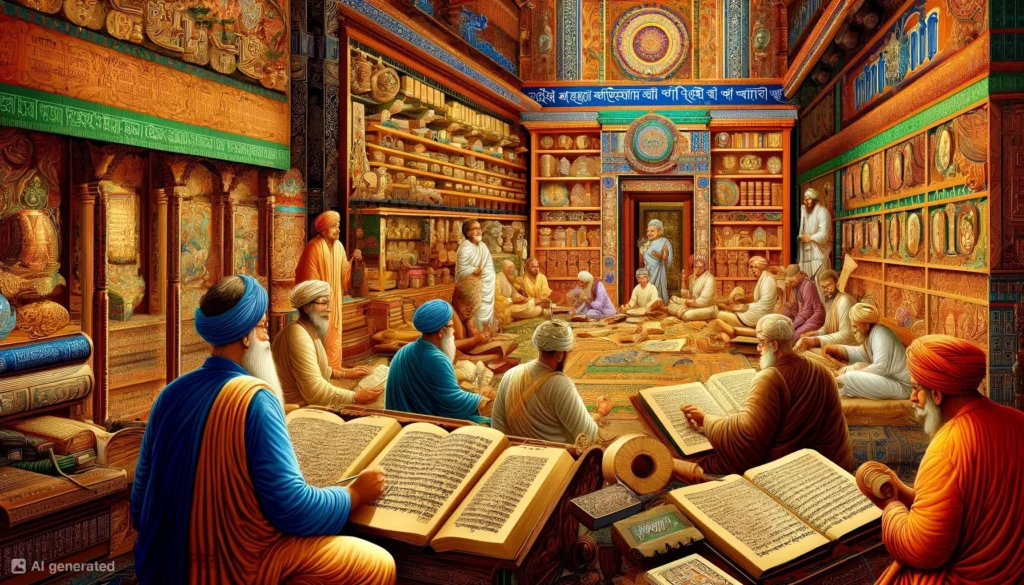
- Epics and Poetry: The Mahabharata and the Ramayana, both Sanskrit epics, tackle themes as universal as they are timeless—love, duty, sacrifice, and war. The Mahabharata, the longest epic in history, even contains the Bhagavad Gita, a profound philosophical dialogue on the nature of duty.
- Sanskrit Grammar: Panini’s “Ashtadhyayi” is a comprehensive treatise on Sanskrit grammar, setting linguistic standards that would later influence linguistic studies worldwide. Panini’s work is among the earliest formalizations of grammatical structure.
- Knowledge Transmission: Ancient Indian society maintained an advanced oral tradition, allowing the accurate transmission of sacred texts over generations. Emphasis on memorization and recitation ensured that teachings remained intact even before written records.
Unfortunately, colonial forces diminished Sanskrit’s role, viewing it as a relic of the past. Yet, today, Sanskrit is again celebrated as an ancient and sophisticated language that formed the foundation of many linguistic principles and influenced modern Indo-European languages.
Metallurgy and Engineering: Technology That Endured Millennia
Ancient Indian civilization’s expertise in metallurgy and engineering remains a marvel to this day. Their advancements in metallurgy, particularly ironwork, reveal a society with deep scientific knowledge.
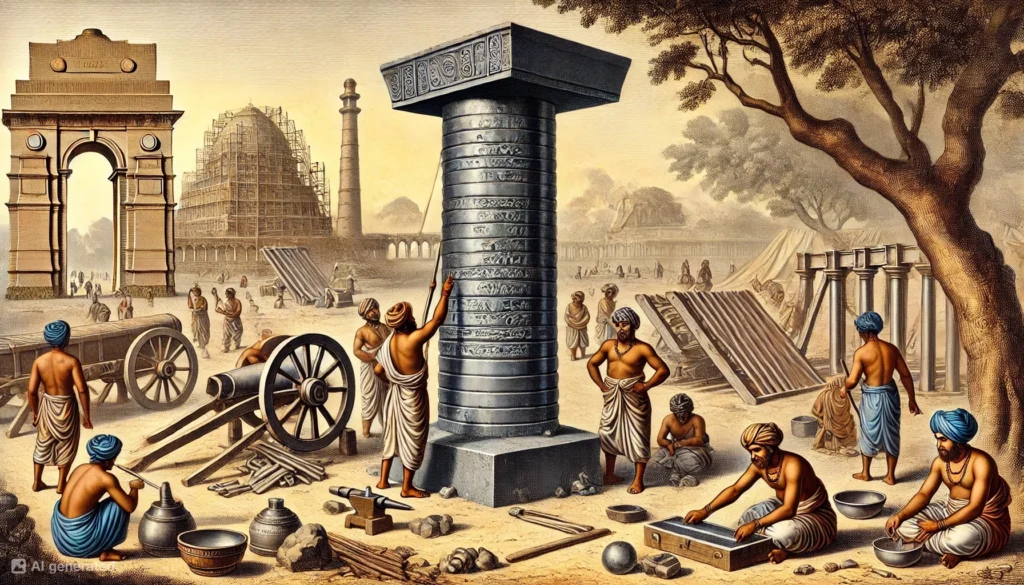
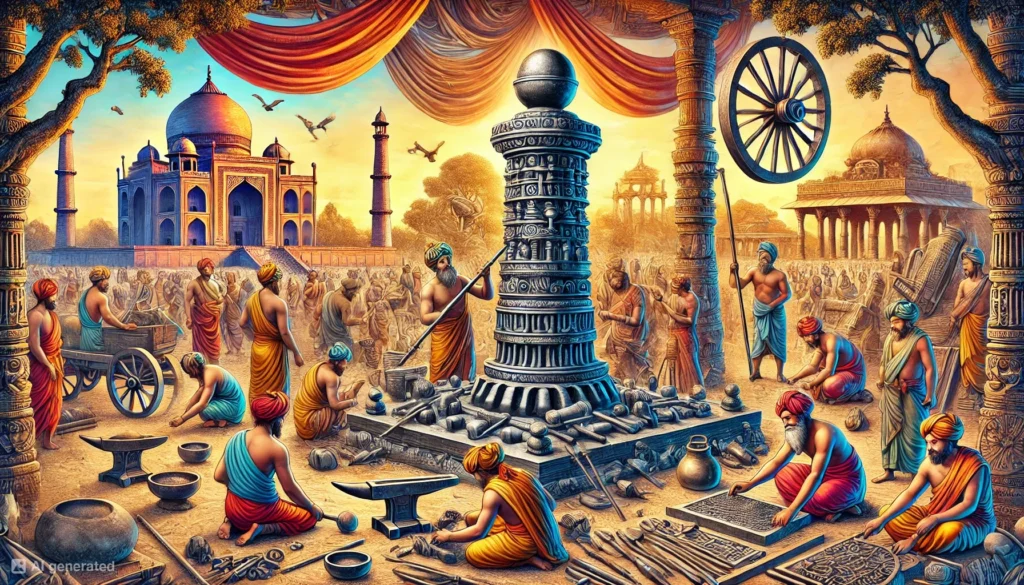
- The Iron Pillar of Delhi: This 7-meter iron column, dating back to the 4th century, is notable for its resistance to corrosion—a phenomenon that remains baffling even by today’s metallurgical standards. Despite centuries of exposure to the elements, the pillar stands tall as a testament to ancient Indian expertise.
- Zinc Extraction and Alloys: Ancient Indian metallurgists were among the first to master zinc extraction, a feat unknown to much of the world for centuries. They also created durable alloys, such as brass, which had practical and aesthetic value.
- Temple Architecture: Ancient Indian engineers built architectural marvels, such as the Kailasa Temple in Ellora, carved from a single rock. These monumental feats of engineering required advanced tools, precision, and knowledge, even by modern standards.
While much of this knowledge was lost during various invasions, some artifacts, such as the Iron Pillar, survived as silent testaments to the genius of ancient Indian engineers. It’s worth noting that Western scholars continue to study these structures, occasionally “rediscovering” techniques that Indians perfected millennia ago.
The Indestructible Roots of Ancient Indian Civilization
Despite centuries of invasions, plunder, and cultural erasure, ancient Indian civilization has proven unbreakable. It stands tall not because of its undisturbed monuments but because of the indestructible roots it planted in the souls of its people. Western scholars may attempt to “reintroduce” Indian philosophies, practices, and discoveries, but the truth is simple: India has always known its worth. It has stood the test of time, not through conquest but through an unshakable heritage that endures, undeterred by centuries of systematic attempts to erase it.
True knowledge and culture cannot be destroyed. They can be borrowed, taught back with new labels, even looted—but they always return like echoes of a civilization that was wise, rooted, and resilient long before the world knew it.
Video: Exploring Ancient India with Bharat Varsh Project: A Journey Through Time
Video: Ancient India Explained: A Full Historical Overview by Made In History
Key Questions on Ancient Indian Civilization
What was an ancient Indian civilization?
Ancient Indian civilization refers to the societies that developed in the Indian subcontinent from around 3300 BCE, with the Indus Valley Civilization as one of the earliest known urban cultures. Known for its advanced urban planning, mathematical knowledge, holistic medicine, philosophy, and spirituality, ancient India made significant contributions to human history and culture.
What is the ancient civilization in India called?
The earliest known civilization in India is called the Indus Valley Civilization (or Harappan Civilization), which flourished between 3300 BCE and 1300 BCE along the banks of the Indus River. It is known for its sophisticated cities, such as Mohenjo-Daro and Harappa, and is one of the world’s earliest urban civilizations.
Is Indian civilization older than Egyptian?
Yes, the Indian civilization, specifically the Indus Valley Civilization, dates back to around 3300 BCE, making it contemporaneous with and possibly slightly older than ancient Egyptian civilization, which dates back to around 3100 BCE. Both civilizations were among the earliest to develop urban centers, written languages, and advanced social structures.
What was the greatest civilization in India?
The Indus Valley Civilization is often regarded as one of the greatest ancient civilizations in India due to its advanced urban infrastructure, complex social organization, and impressive achievements in various fields. Later civilizations, such as the Maurya Empire under Ashoka, also reached significant heights, contributing to India’s legacy of science, art, philosophy, and governance.
What were the major contributions of ancient Indian civilization to the world?
Ancient Indian civilization made significant contributions in various fields, including:
Mathematics: Development of the decimal system and the concept of zero.
Astronomy: Detailed studies of planetary motion, lunar cycles, and calculations of Earth’s rotation.
Medicine: Ayurveda, a holistic healing system, and early surgical techniques documented by Sushruta.
Architecture and Urban Planning: Advanced city layouts, drainage systems, and monumental architecture.
Philosophy and Spirituality: Profound insights in texts like the Upanishads and Bhagavad Gita, as well as the development of yoga and meditation.
What made ancient Indian cities like Mohenjo-Daro and Harappa unique?
Mohenjo-Daro and Harappa, cities of the Indus Valley Civilization, showcased remarkable urban planning for their time. They featured a grid layout of streets, advanced drainage systems, uniform construction materials, and even public baths. These cities reflect sophisticated administrative systems and an understanding of hygiene and community infrastructure that was far ahead of many contemporary civilizations.
How did foreign invasions affect ancient Indian civilization?
Foreign invasions significantly impacted ancient Indian civilization. Many invaders looted temples, destroyed educational institutions like Nalanda University, and plundered India’s wealth. These invasions led to the loss of invaluable manuscripts, cultural heritage, and ancient architectural marvels. Despite this, India’s deep-rooted culture, traditions, and knowledge systems survived, influencing both Eastern and Western societies.
How did ancient India contribute to modern science and mathematics?
Ancient India made profound contributions to modern science and mathematics, including:
The Concept of Zero: An essential element in mathematics, invented by Indian scholars.
Decimal System: The number system used globally today was developed in ancient India.
Astronomical Studies: Indian scholars accurately calculated the length of a year, planetary orbits, and Earth’s rotation.
Ayurvedic Medicine: Practices and principles in Ayurveda laid the groundwork for many modern holistic health systems.
What role did philosophy and spirituality play in ancient Indian culture?
Philosophy and spirituality were central to ancient Indian culture, shaping its values and worldview. Texts like the Upanishads and the Bhagavad Gita explored complex ideas about the self, consciousness, and the universe, emphasizing interconnectedness and moral duty (Dharma). Practices like yoga and meditation originated in ancient India and were methods for spiritual growth and self-realization
Why is Ayurveda significant in ancient Indian civilization?
Ayurveda, an ancient Indian system of medicine, emphasized holistic health by focusing on the balance between mind, body, and spirit. It included natural remedies, diet, and lifestyle practices aimed at disease prevention and wellness. Pioneers like Sushruta and Charaka contributed to surgical and medical advancements, making Ayurveda one of the oldest organized healing systems in the world.
How did ancient Indian civilization influence the Western world?
Many elements of ancient Indian civilization made their way to the Western world, influencing various domains:
Mathematics: The concept of zero and the decimal system spread to Europe through translations of Indian texts.
Philosophy: Indian philosophies, particularly those in the Upanishads and teachings of Buddha, inspired Western thinkers.
Medicine: Ayurveda’s holistic health principles influenced global wellness practices.
Yoga and Meditation: These ancient Indian practices have become widely adopted and celebrated globally.
What was Nalanda University, and why is it significant?
Nalanda University, established in ancient India around the 5th century CE, was one of the world’s earliest universities. It attracted scholars from as far as China, Tibet, and Southeast Asia. The university housed extensive manuscripts and provided instruction in subjects like philosophy, mathematics, medicine, and astronomy. Nalanda’s destruction by invaders led to the loss of invaluable knowledge and manuscripts, symbolizing a tragic chapter in the history of ancient Indian civilization.
Why is ancient Indian civilization considered resilient?
Ancient Indian civilization is considered resilient due to its ability to endure and preserve its culture, knowledge, and traditions despite centuries of invasions, plundering, and attempts to erase its heritage. Its values, innovations, and practices have been passed down through generations, continuing to influence modern India and the world.
How has ancient Indian culture and knowledge survived through the centuries?
The survival of ancient Indian culture and knowledge can be attributed to the strong traditions, oral transmission, and community-based practices that ensured continuity. While many texts and artifacts were lost or destroyed over centuries, much of the knowledge was preserved in the collective memory of society, religious institutions, and families. This resilience has kept ancient Indian wisdom alive and relevant in modern times.

